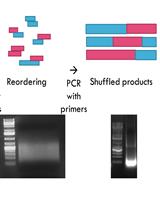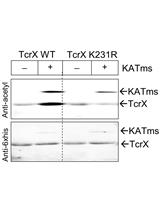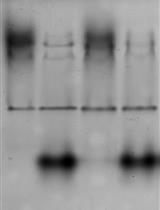Bacillus methanolicus (B. methanolicus) is a Gram-positive, thermotolerant, and facultative methylotrophic bacterium that can use the one-carbon (C1) compound methanol as a source of carbon and energy (Schendel et al., 1990; Arfman et al., 1997; Arfman et al., 1992). B. methanolicus uses the Ribulose monosphosphate (RuMP) cycle for the fixation of formaldehyde (Anthony, 1986; Brautaset et al., 2007). In the RuMP cycle, Sedoheptulose 1,7-bisphoasphate (SBP) can be produced from erythrose 4-phosohate (E4-P) and dihydroxyacetone phosphate (DHAP) by sedoheptulose 1,7-bisphosphate aldolase (SBA) and dephosphorylated to yield sedoheptulose 7-phosphate (S7-P) by sedoheptulose 1,7-bisphosphatase (SBPase). Unfortunately, since neither E4-P nor SBP is commercially available, these compounds cannot be used directly in enzyme assays to obtain evidence for synthesis and hydrolysis of SBP. To circumvent this limitation, a coupled discontinuous enzyme assay including transketolase from Saccharomyces cerevisiae (S. cerevisiae) was used. E4-P and xylulose 5-phosphate (XU5-P) were generated from fructose 6-phosphate (F-6P) and glyceraldehyde 3-phosphate (GAP) by transketolase from S. cerevisiae. Aldol condensation of E-4P with DHAP to yield SBP was tested by using purified fructose 1,6-bisphosphate aldolase (FBAC or FBAP) from B. methanolicus (Stolzenberger et al., 2013a). Subsequently, hydrolysis of SBP to S7-P was assayed by using purified fructose 1,6-bisphosphatase (GlpXC or GlpXP) from B. methanolicus (Aldolases and phosphatases are not commercially available.) (Stolzenberger et al., 2013b).
Keywords:
Sedoheptulose 1,7-bisphosphate aldolase (景天庚酮糖1,7 -二磷酸醛缩酶)
 Fructose 1,6-bisphosphate aldolase (果糖1,6 -二磷酸醛缩酶)
Fructose 1,6-bisphosphate aldolase (果糖1,6 -二磷酸醛缩酶)
 Methylotrophy (甲基营养菌)
Methylotrophy (甲基营养菌)
 RuMP cycle (RuMP循环)
RuMP cycle (RuMP循环)
 Ribulose monophosphate cycle (单磷酸核酮糖循环)
Ribulose monophosphate cycle (单磷酸核酮糖循环)















